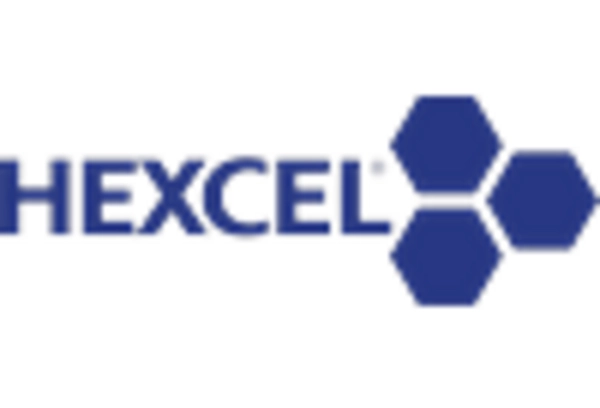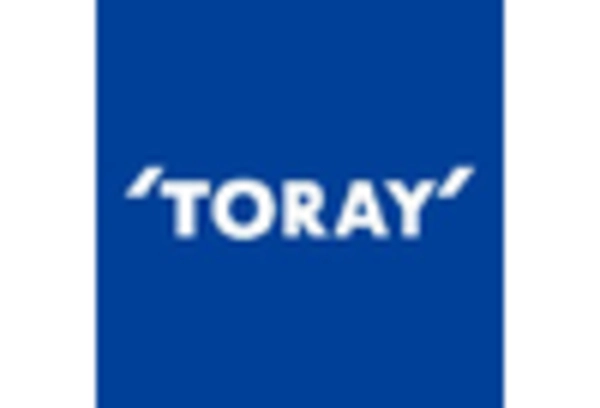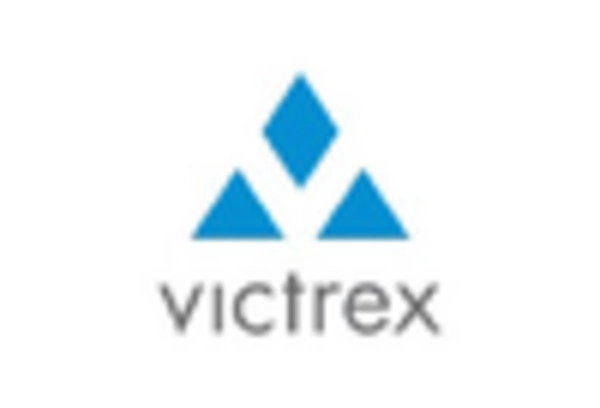Growing Focus on Sustainability
The Aerospace High Performance Thermoplastics Market is increasingly aligned with the growing focus on sustainability within the aerospace sector. As environmental concerns become more pronounced, manufacturers are seeking materials that not only perform well but also have a lower environmental impact. High performance thermoplastics are often recyclable and can be produced with reduced energy consumption compared to traditional materials. This aligns with the aerospace industry's commitment to achieving carbon neutrality by 2050. The integration of sustainable materials into aircraft design is likely to propel the demand for high performance thermoplastics, as companies strive to meet both regulatory requirements and consumer expectations.
Customization and Tailored Solutions
The Aerospace High Performance Thermoplastics Market is characterized by a rising demand for customization and tailored solutions. As aerospace applications become more specialized, manufacturers are increasingly seeking materials that can be customized to meet specific performance criteria. High performance thermoplastics offer versatility in formulation, allowing for adjustments in properties such as strength, flexibility, and thermal resistance. This adaptability is particularly valuable in the aerospace sector, where different components may require unique material characteristics. The ability to provide tailored solutions is likely to enhance the competitive edge of manufacturers in the aerospace high performance thermoplastics market, driving further innovation and adoption.
Advancements in Manufacturing Technologies
The Aerospace High Performance Thermoplastics Market is benefiting from advancements in manufacturing technologies. Innovations such as additive manufacturing and advanced composite fabrication techniques are enabling the production of complex geometries and lightweight structures. These technologies allow for greater design flexibility and efficiency, which are essential in the aerospace sector. For instance, the adoption of 3D printing in producing thermoplastic components has shown a potential reduction in production time by up to 50%. As these manufacturing processes continue to evolve, they are expected to drive the adoption of high performance thermoplastics in aerospace applications, enhancing overall operational efficiency.
Regulatory Compliance and Safety Standards
The Aerospace High Performance Thermoplastics Market is significantly influenced by stringent regulatory compliance and safety standards. As the aerospace sector faces increasing scrutiny regarding safety and environmental impact, manufacturers are compelled to adopt materials that meet rigorous regulations. High performance thermoplastics offer excellent mechanical properties and thermal stability, making them suitable for critical applications in aerospace. The Federal Aviation Administration (FAA) and other regulatory bodies have established guidelines that encourage the use of advanced materials to enhance safety and performance. Consequently, the demand for high performance thermoplastics is likely to grow as manufacturers seek to comply with these evolving standards.
Increasing Demand for Lightweight Materials
The Aerospace High Performance Thermoplastics Market is experiencing a notable surge in demand for lightweight materials. This trend is primarily driven by the aerospace sector's ongoing efforts to enhance fuel efficiency and reduce emissions. High performance thermoplastics, known for their lightweight properties, are increasingly being utilized in aircraft components, contributing to overall weight reduction. According to recent data, the aerospace industry aims to achieve a 20% reduction in weight for new aircraft designs by 2030. This shift towards lightweight materials not only improves fuel efficiency but also enhances the overall performance of aircraft, making high performance thermoplastics a critical component in modern aerospace engineering.


















Leave a Comment